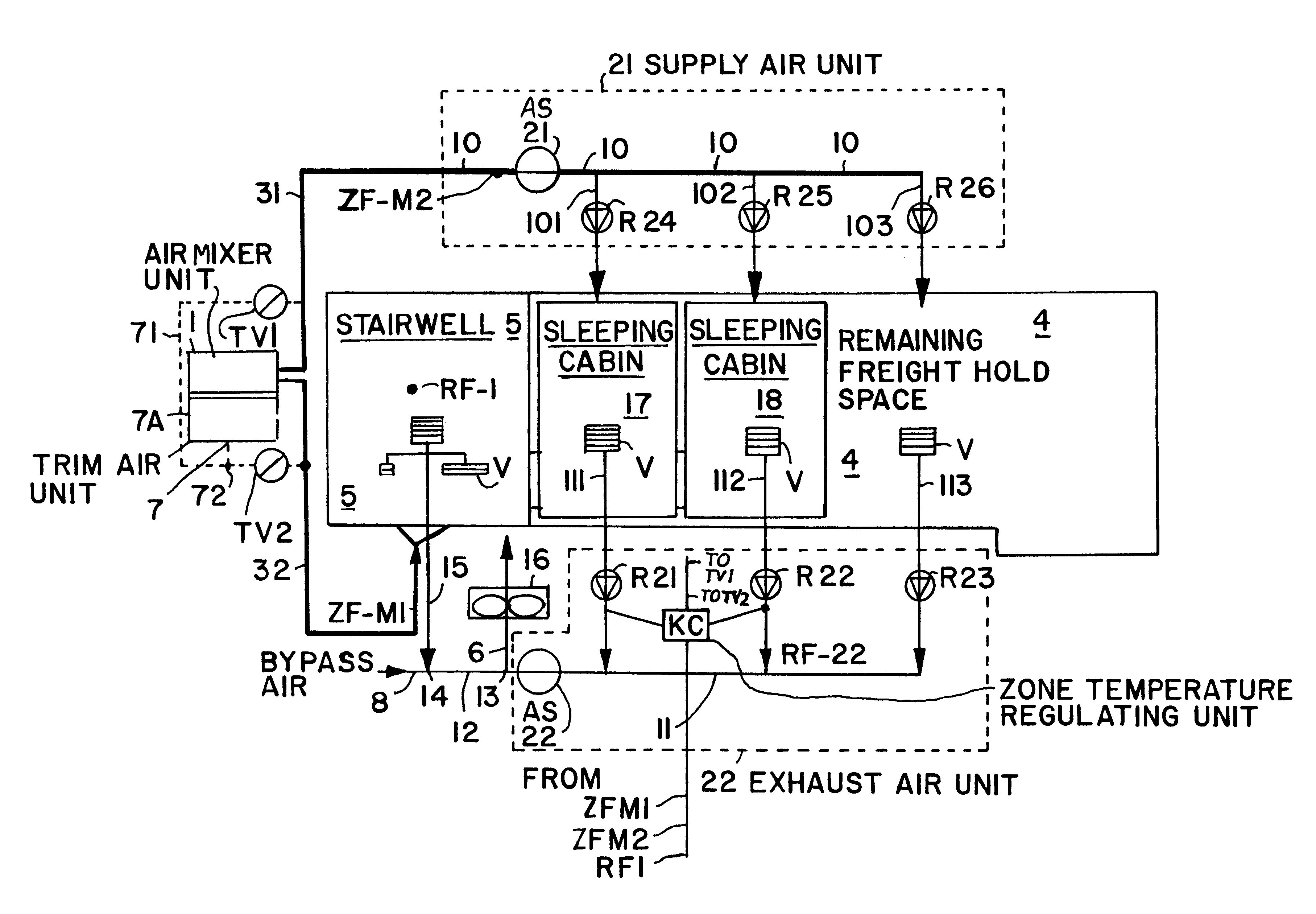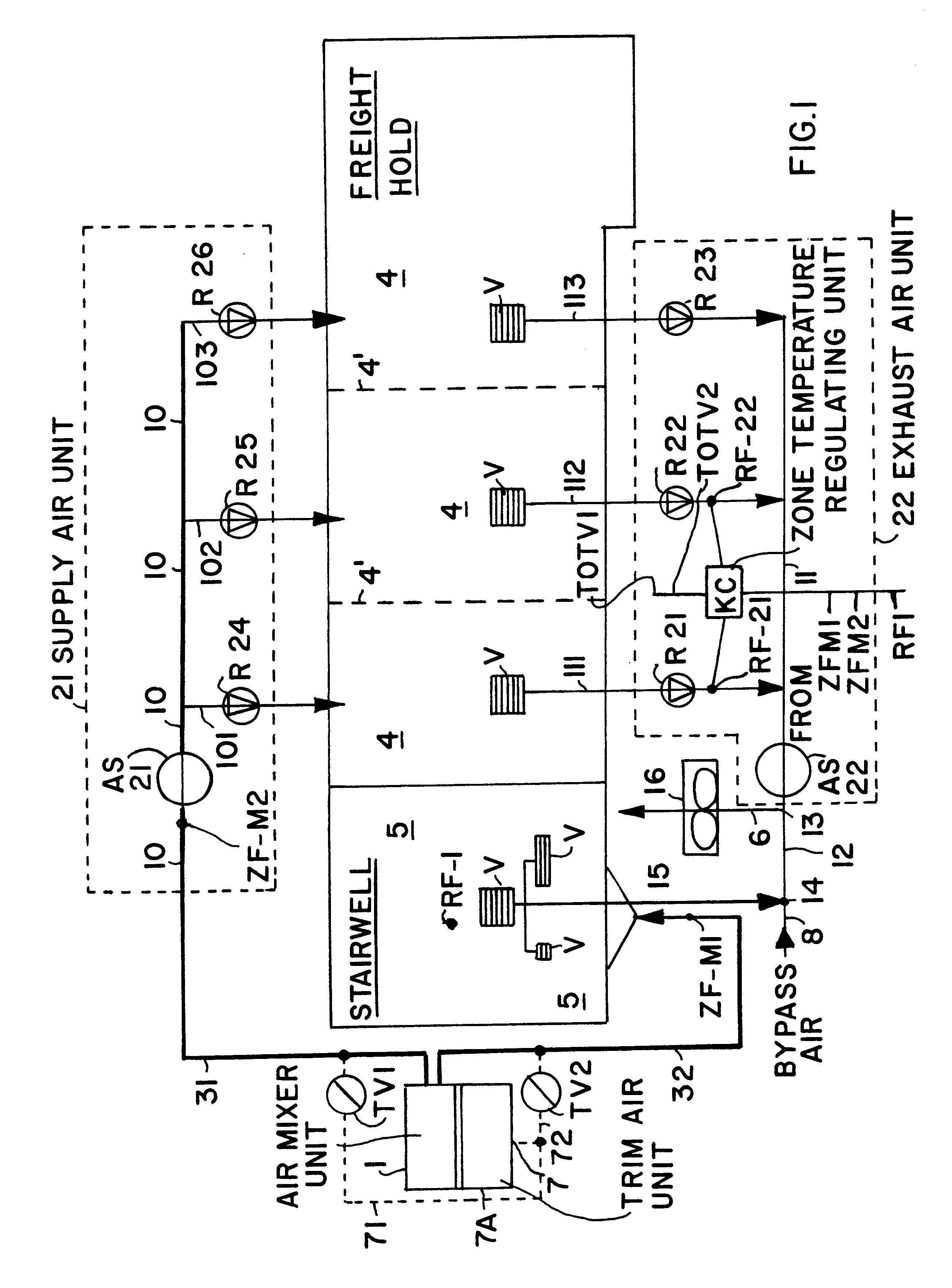Air-conditioning system for below-deck areas of a passenger aircraft
a technology for air-conditioning systems and aircraft, which is applied to aircraft indicators, aircraft floors, and aircraft actuated personally. it can solve the problems of increasing the load of existing air-conditioning packs, increasing the total energy consumption, and increasing the cost of operating the aircra
- Summary
- Abstract
- Description
- Claims
- Application Information
AI Technical Summary
Problems solved by technology
Method used
Image
Examples
Embodiment Construction
The plan view of FIG. 1 schematically shows in block diagram fashion, the underfloor or below-deck area of a passenger aircraft, which includes two separated below-deck spaces, namely a first below-deck space 4 that is used as a freight or cargo hold, and a second below-deck space 5 that is used as a stairwell located directly adjacent to the freight hold 4. The stairwell 5 leads from the below-deck space to the main deck in the passenger cabin of the aircraft. Both of these below-deck spaces 4 and 5 are air-conditioned by an air-conditioning system or arrangement according to the invention.
In general, the present below-deck air-conditioning system comprises a plurality of different air handling units that are connected to each other by any conventionally known air connection lines, such as ducts, pipes, conduits, hoses, channels, etc. As an overview, the below-deck air-conditioning system primarily comprises an air mixer unit 1, a supply air unit 21, an exhaust air unit 22, an exha...
PUM
 Login to View More
Login to View More Abstract
Description
Claims
Application Information
 Login to View More
Login to View More - R&D
- Intellectual Property
- Life Sciences
- Materials
- Tech Scout
- Unparalleled Data Quality
- Higher Quality Content
- 60% Fewer Hallucinations
Browse by: Latest US Patents, China's latest patents, Technical Efficacy Thesaurus, Application Domain, Technology Topic, Popular Technical Reports.
© 2025 PatSnap. All rights reserved.Legal|Privacy policy|Modern Slavery Act Transparency Statement|Sitemap|About US| Contact US: help@patsnap.com



